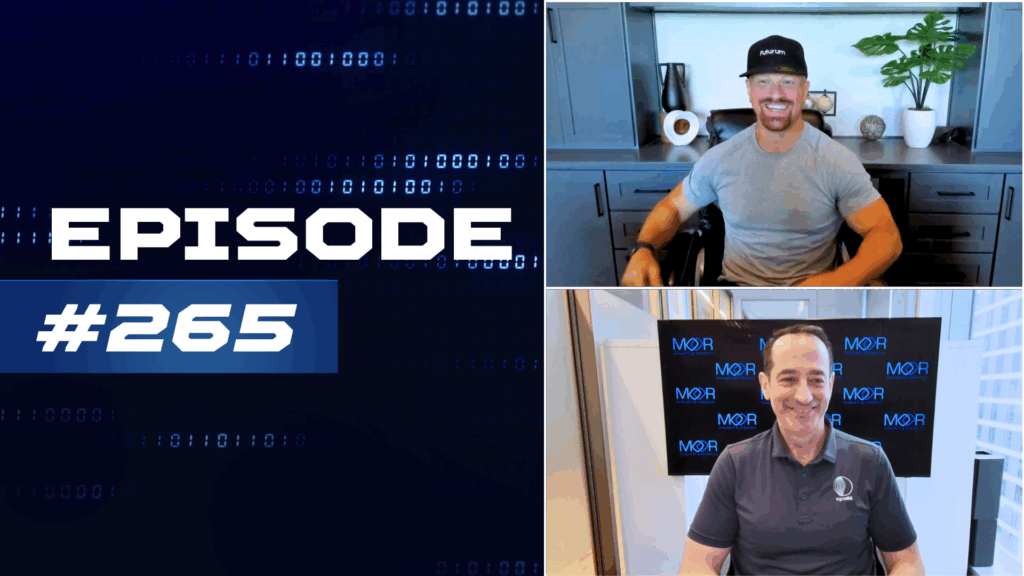Analyst(s): Richard Gordon
Publication Date: February 6, 2025
Arm’s Q3 FY 2025 earnings highlight strong momentum in AI-driven compute platforms, with record revenue driven by the rising adoption of Armv9 and CSS technologies. The company’s growth in royalty and licensing revenue highlights its expanding influence across cloud, mobile, and custom silicon markets.
What is Covered in this Article:
- Arm’s record Q3 FY 2025 earnings performance
- Growth drivers: Armv9 adoption and Compute Subsystem (CSS) momentum
- AI infrastructure expansion: SoftBank, OpenAI, NVIDIA collaborations
- Guidance analysis: revenue trajectory, licensing volatility, and AI demand trends
- Strategic positioning in AI compute, cloud, and custom silicon
The News: Arm Holdings (NASDAQ: ARM) reported a 19% year-on-year (YoY) rise in revenue to $983 million, which was 3.8% higher than consensus expectations. This growth was driven by record-high royalty revenue and sustained momentum in licensing and other revenue streams. Non-GAAP operating profit grew by 22% YoY to $442 million (+11.6% above consensus), and the corresponding margin expanded to 45% (Q3 FY 2025: 43.8%). Non-GAAP net income stood at $417 million (Q3 FY 2025: $324 million), which was 15.6% higher than the consensus expectation. Non-GAAP diluted earnings per share (EPS) stood at $0.39 (Q3 FY 2025: $0.31) and exceeded consensus expectations by 14.7%. Arm’s Annualised Contract Value (ACV) stood at $1.3 billion (+9% YoY), and Remaining Performance Obligations (RPO) fell by 4% YoY to $2.3 billion.
“Arm delivered record Q3 revenue driven by continued strong adoption of Armv9 and CSS compute platforms,” said Rene Haas, CEO of Arm Holdings. “With our high-performance, energy-efficient, flexible technology, Arm is a key enabler in advancing Al innovation and transforming the user experience from the edge to the cloud.”
Arm Reports Record Q3 Revenue as Armv9 and CSS Adoption Accelerates
Analyst Take: Arm delivered a standout performance in Q3 FY 2025, setting an all-time high in royalty revenue at $580 million, marking a 23% YoY increase and exceeding expectations by 2%. This surge was fueled by the wider adoption of Armv9 technology and the scaling of Compute Subsystem (CSS) shipments. Licensing revenue also impressed, growing 14% YoY to $403 million, driven by well-timed high-value deals and backlog contributions. While Arm’s influence in AI workloads, mobile, and custom silicon continues to expand, near-term risks persist, particularly in automotive-related royalties and AI infrastructure spending.
Armv9 and CSS Adoption Fuel Royalty Growth
For the third consecutive quarter, Armv9 technology accounted for 25% of total royalties. While some investors had anticipated a faster shift away from legacy Armv8, the steady percentage reflects triple-digit YoY growth in v9-related royalties in absolute terms. A 40% YoY increase in smartphone royalties played a significant role in this growth, bolstered by v9’s integration into the iPhone 16 and the launch of MediaTek’s Dimensity 9400 in Oppo and Vivo flagship devices. Additionally, IoT royalties rebounded after several weak quarters, indicating early signs of stabilization in that segment.
Meanwhile, Compute Subsystems (CSS) have emerged as a major growth engine, with the number of CSS contracts doubling in 2024. Notably, half of these contracts are linked to data centers, a sign of Arm’s increasing influence in high-performance computing. The company continues to gain market share as Microsoft’s Cobalt, Google’s Axion, and AWS’ Graviton processors integrate Arm-based architectures. Beyond just adoption, CSS-based royalties carry significantly higher rates than traditional core licensing, laying the foundation for multi-year revenue acceleration as more hyperscalers transition to custom silicon solutions.
Strategic AI Positioning: SoftBank, OpenAI, and Hyperscaler Momentum
Arm is solidifying its role in AI infrastructure, securing greater adoption across hyperscaler compute, cloud AI environments, and edge AI applications. The company’s strategic positioning is highlighted by its involvement in SoftBank and OpenAI’s $500 billion Stargate initiative, a long-term AI infrastructure project designed to support next-generation compute capacity. CEO Rene Haas confirmed that Arm CPUs will serve as the foundation of Stargate’s initial configurations, reinforcing Arm’s dominance in AI cloud computing.
Additionally, SoftBank’s Cristal Intelligence initiative is accelerating the adoption of Agentic AI, which operates across all hardware layers – from small consumer devices to vast data centers. This model presents a significant opportunity for Arm’s architecture, as AI workloads will increasingly rely on Arm’s pervasive compute framework across various endpoints.
Arm is also gaining traction in AI silicon development, as seen with NVIDIA’s Project DIGITS GB10 Superchip, which integrates Arm-based Grace CPUs. This signals a growing reliance on Arm for AI training and inference workloads. Meanwhile, Arm’s Kleidi AI software libraries continue to enhance developer optimization, further securing demand for Arm-powered AI computing across cloud, edge, and enterprise applications.
Guidance Reflects Confidence but Highlights Volatility in Licensing
Arm’s Q4 FY 2025 revenue guidance of $1.18-$1.28 billion reflects 32% YoY growth at the midpoint, reinforcing strong top-line momentum. However, the wide range highlights ongoing licensing revenue volatility, as the timing of large deals remains unpredictable. Royalty revenue, in contrast, continues to show solid growth, driven by Armv9 adoption and increased CSS shipments.
For the full fiscal year, Arm raised its revenue forecast to $3.94-$4.04 billion, reflecting approximately 24% YoY growth – a slight adjustment from the previous $3.80-$4.10 billion range, but still within expectations. Adjusted EPS guidance increased to $1.56-$1.64, up from the prior $1.45-$1.65 estimate, aligning with analyst projections. Despite strong AI-driven demand, weakness in automotive-related royalties remains a limiting factor for overall royalty expansion.
CEO Rene Haas reaffirmed Arm’s commitment to aggressive R&D investments, with non-GAAP operating expenses projected at $590 million in Q4 and $2.1 billion for FY 2025, marking a 21% YoY increase. These investments are central to Arm’s ambition to expand further into AI compute, cloud infrastructure, and custom silicon development, solidifying its role in next-generation AI workloads.
Looking ahead
Arm’s long-term growth trajectory remains strong, supported by increasing adoption of Armv9, CSS, and AI-driven computing. The company’s deep integration into AI compute ecosystems, spanning SoftBank’s Stargate initiative, Cristal Intelligence, and NVIDIA’s DIGITS supercomputing platform, further cements its leadership in next-gen AI infrastructure.
At the same time, custom silicon adoption across data centers and mobile AI devices presents a multi-year growth runway for royalty expansion. However, competition from x86 incumbents like Intel and AMD, alongside shifting AI market dynamics, will require careful monitoring.
While short-term volatility in licensing revenue and automotive-related softness may create quarterly fluctuations, Arm’s expanding role in AI workloads, cloud compute, and custom silicon markets positions it as a key enabler of the AI revolution. The company’s sustained push into high-performance AI computing ensures that it will remain a cornerstone of the AI-driven future.
Daniel Newman and his co-host of The Six Five Webcast, Patrick Moorhead of Moor Insights and Strategy discusses Arm’s earnings in their latest episode. Check it out here and be sure to subscribe to The Six Five Webcast so you never miss an episode.
Read the full press release on the Arm Holdings website.
Disclosure: The Futurum Group is a research and advisory firm that engages or has engaged in research, analysis, and advisory services with many technology companies, including those mentioned in this article. The author does not hold any equity positions with any company mentioned in this article.
Analysis and opinions expressed herein are specific to the analyst individually and data and other information that might have been provided for validation, not those of The Futurum Group as a whole.
Other insights from The Futurum Group:
Arm Q2 FY 2025 Earnings: AI & Data Center Growth Drive Revenue
US Government Unveils $500B Stargate Alliance to Lead US AI Infrastructure Push
How Arm is Powering the Next Generation of AI-Enabled Vehicles – Six Five On The Road at CES 2025
Author Information
Richard Gordon is Vice President & Practice Lead, Semiconductors for The Futurum Group. He has been involved in the semiconductor industry for more than 30 years, first in engineering and then in technology and market research, industry analysis, and business advisory.
For many years, Richard led Gartner's Semiconductor and Electronics practice, building a 20-person global team covering all aspects of semiconductor industry research, from manufacturing to chip markets and end applications. Having served on Gartner's Senior Research Board and as Gartner's Chief Forecaster, Richard has extensive experience in developing and implementing methodologies for market sizing, share and forecasting, to deliver data, analysis and insights about the competitive landscape, technology roadmaps, and market growth drivers.
Richard is a sought-after technology industry analyst, both as a trusted advisor to clients and also as an expert commentator speaking at industry events and appearing on live TV shows such as CNBC.





